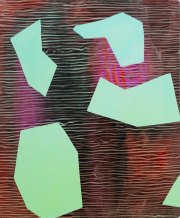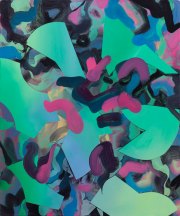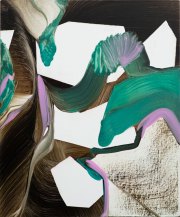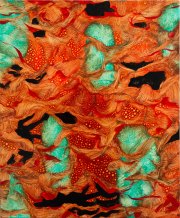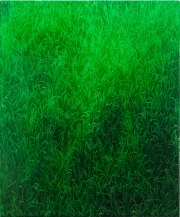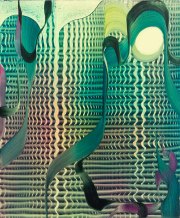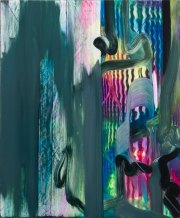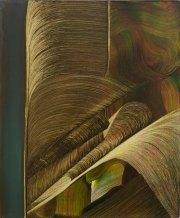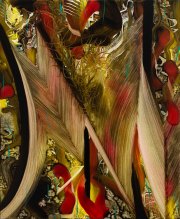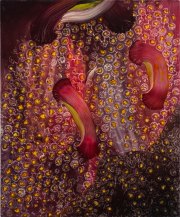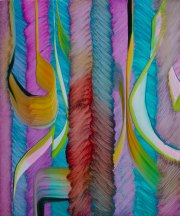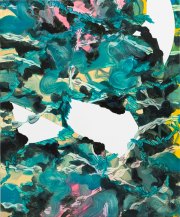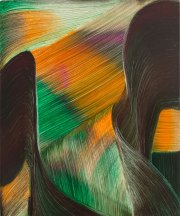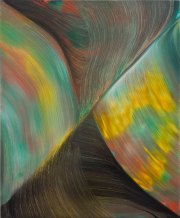Andy Harper, Pryote, 2019, Oil on Canvas, 20.5 x 17 Inches
EXHIBITION DATES
December 18, 2019, to January 25, 2020
RECEPTION
Saturday, January 11, 2020, 5pm to 7pm
Facebook Event Page
Andy Harper, Blindspots, 2019, Oil on Canvas, 20.5 x 17 Inches
Harper’s marks and smears alternate with botanical, architectural, and modernist references that disorder the pictorial surface, giving the viewer no clear sense of perspective or spatial depth. Though different in composition and color, many of these paintings suggest an inner dialogue with a reflective overlap. There is a kind of conversation taking place that is filtered through the artist, the paint, and the picture plane, resulting in works that are imaginative and distinctly his own.
Andy Harper, Thodan, 2019, Oil on Canvas, 20.5 x 17 Inches
“Whether conjuring a scene from a parallel botanical world, working abstractly or opening up a dialogue with an appropriated image, my method of painting is the same,” says artist Harper. “A membrane of transparent paint is spread across the slippery surface of the support. Brushes and various implements are brought in contact with this sensitive and ever moveable layer of oily paint. Pigments and mediums are carefully mixed for their specific drying properties. Working in this ‘only when wet’ technique provides a window of opportunity to act upon the surface.”
Andy Harper, Phentype, 2019, Oil on Canvas, 20.5 x 17 Inches
Transcribing images, inventing marks and devising the composition, acting and re-acting, Harper accumulates hundreds of decisions. The brush or tool moves too quickly across the surface to be contrived or engineered, instead intuitive impulses and hunches drive the work. Every twist, jerk, stroke, division and line drawn into the wet paint extends his understanding of procedural memory, visual thinking, pattern recognition, sensory processing, neuroaesthetics, and haptic perception. Before long the resinous film begins to stiffen and gel.

Andy Harper, Silencer, 2019, Oil on Canvas, 20.5 x 17 Inches
Harper says, “Once dry, I am locked out and held within the solidified surface the evidence remains, like an archaeological record of the work enacted during this bracketed period of time. The painting becomes a record, not of the visual world, but of thought.”





